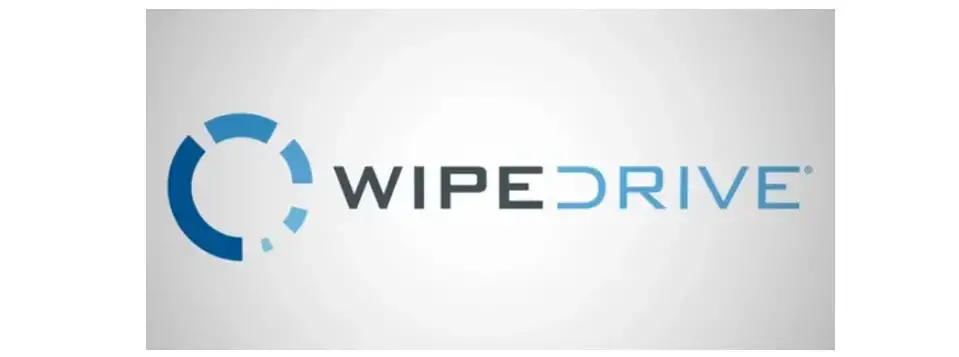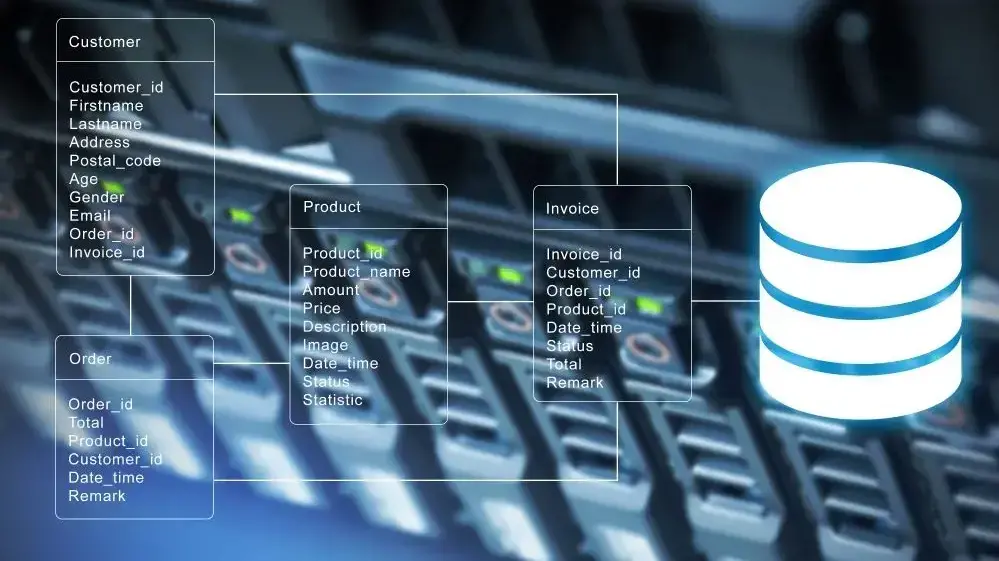Did you know that simply deleting files from your computer does not actually erase them? In an era of frequent data breaches and identity theft, securing sensitive information is more critical than ever. Imagine discarding an old computer or smartphone, only to have your data recovered by someone else.
This is where data sanitization comes into play. Data sanitization involves deliberately and irreversibly removing or destroying data stored on a memory device, ensuring it cannot be recovered.
Techniques like overwriting, degaussing, and physical destruction are employed to protect sensitive information from unauthorised access. By mastering these techniques, organisations can safeguard their data, maintain compliance, and build trust with customers and stakeholders.
Importance of Data Sanitization
Prevents Data Breaches: Data sanitization eliminates residual data, ensuring sensitive information is irrecoverable, and protecting against unauthorised access and potential breaches.
Ensures Regulatory Compliance: Proper data sanitization helps organisations meet legal and industry-specific requirements for data disposal, avoiding hefty fines and legal consequences.
Safeguards Reputation: By securely erasing data, companies can avoid the reputational damage resulting from data leaks or breaches, maintaining customer trust and business integrity.
Facilitates Safe Hardware Reuse: Sanitized devices can be safely repurposed or resold without the risk of exposing previous data, supporting sustainable practices and cost savings.
Protects Against Identity Theft: Thorough data sanitization prevents malicious actors from exploiting personal information, reducing the risk of identity theft and fraud.
Secure Data Sanitization Techniques
1. Data Deletion
Data deletion involves removing the data references in storage systems. This method alone is not entirely secure, as deleted data can often be recovered using specialized software.
Logical deletion marks the data as deleted in the file system but does not erase the actual data from the storage medium. Physical deletion physically removes data from storage, though it often requires further methods to ensure data is unrecoverable.
2. Data Overwriting
Data overwriting replaces old data with new data, typically random or patterned sequences of bits, making the original data irretrievable. Single-pass overwriting overwrites data with a single sequence of random or fixed patterns.
Multiple-pass overwriting uses multiple passes (often three or more) with different patterns to ensure data destruction, as recommended by standards like DoD 5220.22-M.
3. Degaussing
Degaussing uses a powerful magnetic field to disrupt the magnetic domains on a storage device, rendering the data unreadable. This technique is primarily used for magnetic storage media such as hard drives and tapes. While effective for magnetic media, the device is often unusable after degaussing.
4. Cryptographic Erase (Crypto Erase)
Cryptographic erase involves encrypting data and then securely deleting the encryption keys. Without the keys, the data remains encrypted and unreadable. The process involves encrypting the data with a strong encryption algorithm and securely deleting the encryption keys.
5. Physical Destruction
Physical destruction ensures data is irretrievable by physically damaging the storage medium.
Methods include shredding, which mechanically shreds the device into small pieces; drilling or crushing, which physically damages the device using drills or crushers; incineration, which burns the device to ashes; and using an acid bath, which dissolves the storage medium with corrosive chemicals.
6. Secure Erase
Secure erase is a firmware-based method supported by many modern hard and solid-state drives (SSDs). It uses the drive's built-in capabilities to erase all stored data securely. This method executes a data wipe command directly on the drive and is often faster and more thorough than software-based methods.
7. Sanitization Commands (ATA Secure Erase)
ATA Secure Erase is a command defined in the ATA specification for securely erasing data from ATA hard drives. This low-level command erases data at the firmware level and is supported by many modern HDDs and SSDs.
Data Sanitization vs. Data Deletion
| Criteria | Data Sanitization | Simple Data Deletion |
|---|---|---|
| Definition | Process of securely erasing data to ensure it cannot be recovered. | Basic removal of data pointers, leaving data recoverable. |
| Data Recovery | Data is rendered irretrievable, even with advanced tools. | Data can often be recovered using specialised software. |
| Techniques Used | Methods include overwriting, degaussing, and physical destruction. | Typically involves deleting files or formatting storage. |
| Security Level | High security, suitable for sensitive and confidential data. | Low security, insufficient for protecting sensitive data. |
| Compliance | Meets regulatory requirements for data protection and privacy. | Often does not meet compliance standards for data privacy. |
| Intended Use | Used when data must be permanently removed without risk of recovery. | Used for routine file management without concern for data recovery. |
| Examples | Data sanitization tools like Blancco, physical shredding of drives. | Using OS delete function, emptying recycle bin or trash. |
Tools for Data Sanitization
These software tools offer efficient and reliable methods for permanently removing sensitive data, helping organisations and individuals safeguard their privacy and prevent unauthorised access to confidential information.
1. BitRaser

A comprehensive data erasure software that securely wipes entire drives or individual files, exceeding international data sanitization standards to prevent data recovery.
2. KillDisk

This is an efficient tool for erasing data from hard drives, SSDs, and other storage devices. It offers various sanitization methods, such as DoD 5220.22-M and NIST 800-88 compliance, to meet security requirements.
3. R-Wipe & Clean

Combines data wiping capabilities with system cleaning features, allowing users to securely erase traces of their online and offline activities while sanitizing storage devices to prevent data leakage.
4. WipeDrive

Trusted by IT professionals and government agencies, it securely erases data from hard drives, SSDs, and other storage media, ensuring compliance with various data privacy regulations and protecting against data breaches.
Types of Data Sanitization Methods
Data Masking: Hides original data by replacing it with fictional but realistic data, maintaining data utility for non-production environments while protecting sensitive information.
Data Redaction: This process removes or obscures sensitive information from documents or databases, preventing unauthorised access to confidential data.
Data Deletion: Permanently removes data from storage, either logically (marked as deleted) or physically (completely erased).
Data Encryption: Converts data into a coded format that can only be read with a decryption key, protecting data during storage and transmission.
Data Anonymization: Removes or modifies personal identifiers in a dataset to prevent individual identification, ensuring privacy compliance.
Data Cleansing: Corrects or removes inaccurate, incomplete, or irrelevant data, improving data quality and usability.
Data Transformation: Changes the format, structure, or values of data to make it consistent and usable, often involving normalisation or conversion.
Data Substitution: Replaces original data with statistically similar but non-identical data, protecting sensitive values while maintaining analytical value.
Choosing the Right Data Sanitization Technique
1. Data Sensitivity: Assess the data's importance and confidentiality to determine the security level needed in sanitization to prevent unauthorised recovery.
2. Regulatory Compliance: Ensure that the sanitization method aligns with relevant laws and industry standards, which may mandate specific techniques to protect against data breaches and ensure data privacy.
3. Media Type: Different storage media, such as HDDs, SSDs, or tapes, require different sanitization methods due to their distinct data storage mechanisms and capabilities for data residuals.
4. Reuse vs. Disposal: Decide if the storage device will be reused or disposed of; reuse may require secure erasure techniques, while disposal might justify physical destruction.
5. Cost and Efficiency: Balance various sanitization methods' costs, time, and resources to select an effective and economically viable option.
Industry Applications of Data Sanitization
Healthcare: Healthcare organisations handle sensitive patient information, including medical records and personal data, requiring stringent data sanitization to comply with regulations like HIPAA and protect patient privacy.
Finance: Financial institutions manage highly sensitive data, such as personal financial details, transaction records, and banking information, necessitating rigorous sanitization to comply with laws like GDPR and to prevent identity theft and fraud.
Retail and E-commerce: Sanitizing customer transaction records, payment information, and personal details stored in databases to prevent identity theft and comply with privacy regulations like GDPR.
Government: Government agencies handle classified and sensitive information related to national security, citizen data, and confidential communications, making thorough data sanitization crucial to preventing unauthorised access and breaches.
Technology: Technology companies often store vast amounts of user data and proprietary information, necessitating effective data sanitization to protect intellectual property, maintain customer trust, and comply with data protection regulations.
Implementation Guide for Data Sanitization
Step 1: Regular Risk Assessments
Conduct regular risk assessments to identify sensitive data and potential security vulnerabilities within your organisation's infrastructure.
Step 2: Clear Policies and Procedures
Establish clear and comprehensive data sanitization policies and procedures outlining the methods, the responsible personnel, and the frequency of sanitization activities.
Step 3: Employee Training
Provide thorough training to employees on data handling best practices, including proper methods for data sanitization and disposal, to ensure consistent adherence to security protocols.
Step 4: Documentation and Auditing
Maintained detailed records of all data sanitization activities, including dates, methods used, and the specific data sanitized, and conducted regular audits to verify compliance with policies and regulations.
Step 5: Combination of Techniques
Utilise a combination of data sanitization techniques, such as overwriting, degaussing, and physical destruction, tailored to the type of storage media and the sensitivity of the data being sanitized.
Step 6: SSD-Specific Methods
Implement specialised data sanitization techniques for solid-state drives (SSDs), considering their unique architecture and challenges, such as cryptographic erasure or SSD-specific data wiping software.
Step 7: Verification of Effectiveness
Verify the effectiveness of data sanitization processes through testing or validation procedures to ensure that sensitive data has been irreversibly erased and cannot be recovered.
Addressing The Challenges in Data Sanitization
1. Maintaining Data Integrity: A challenge arises in ensuring that data remains accurate and consistent after sanitization, as excessive modification can lead to the loss of important information. Implementing robust validation checks and data profiling techniques can help identify anomalies without compromising data integrity.
2. Preserving Data Privacy: Stripping sensitive information while preserving data's usefulness can be tricky. Techniques like anonymisation or pseudonymisation can be employed to replace identifiable information with artificial identifiers, thereby protecting privacy while retaining data utility.
3. Handling Large Volumes of Data: Sanitizing vast datasets within reasonable time frames poses a challenge due to resource constraints and processing limitations. Employing parallel processing techniques or utilising scalable cloud-based solutions can help expedite data sanitization processes, enabling efficient handling of large volumes of data.
4. Ensuring Compliance with Regulations: Meeting regulatory requirements regarding data protection and privacy can be complex, especially when operating across multiple jurisdictions with differing laws. Implementing a comprehensive compliance framework, including regular audits and documentation of data handling processes, ensures adherence to relevant regulations such as GDPR or HIPAA.
5. Addressing Emerging Threats: With evolving cybersecurity threats, traditional data sanitization methods may become inadequate in protecting against sophisticated attacks. Adopting advanced threat detection technologies such as machine learning algorithms for anomaly detection and integrating real-time monitoring systems enhances the ability to identify and mitigate emerging threats during data sanitization processes.
Regulatory and Compliance Considerations of Data Sanitization
Data Privacy Regulations: Compliance with laws like GDPR or CCPA requires organisations to sanitize data to protect individuals' privacy properly. This involves removing or anonymising personally identifiable information (PII) before disposing of or repurposing data to prevent unauthorised access or use.
Industry Standards: Various industries, such as healthcare (HIPAA) or finance (PCI-DSS), have specific data sanitization requirements to protect sensitive information. Adhering to these standards involves employing encryption, data masking, or secure erasure to render data unreadable or irretrievable.
Risk Mitigation: Effective data sanitization reduces the risk of data breaches, identity theft, and regulatory fines, safeguarding the organisation and its stakeholders. Implementing clear policies, regular audits, and secure data destruction practices helps mitigate the legal and reputational risks of mishandling sensitive data.
NIST Guidelines for Data Sanitization
1. Clear: Clearing data involves removing sensitive information by overwriting storage locations with non-sensitive data. NIST recommends overwriting all addressable locations with a single character (e.g., all zeros or ones) or a random pattern. This method is suitable when data needs to be reused, and the media is not highly sensitive.
2. Purge: Purging refers to a more thorough method of data sanitization, especially for more sensitive media or when reuse is not required. NIST guidelines suggest methods such as degaussing (applicable for magnetic media) or physically destroying the media (e.g., shredding for hard drives) to prevent any possibility of recovering data.
3. Destroy: Destruction renders the data storage medium unusable for any practical purpose. This is typically done through physical destruction methods like shredding, melting, or pulverizing. NIST emphasises ensuring destruction to the extent that data recovery is infeasible.
4. Cryptographic Erase: NIST acknowledges that cryptographic methods can be used for sanitization, provided the cryptographic keys are strong and properly managed. This method ensures that even if the data remains on the storage medium, it cannot be accessed without the encryption keys.
5. Declassification: For classified information, NIST guidelines include additional steps and protocols defined by the relevant government agency (e.g., NSA for U.S. government data). These steps ensure that data is sanitized by the specific classification level and agency guidelines.
Best Practices for Data Sanitization
Understand Data Sensitivity: Prioritise data sanitization methods based on the sensitivity of the information involved to ensure appropriate protection against unauthorised access or disclosure.
Use Secure Erasure Methods: Employ methods like overwriting with random patterns or cryptographic erasure to ensure that data is effectively removed from storage media and cannot be recovered using standard data recovery techniques.
Document and Verify Processes: Maintain records of sanitization activities, including the methods used and verification steps, to ensure compliance with organisational policies, legal requirements, and industry standards.
Regularly Review and Update Practices: Periodically reassess and update data sanitization practices to incorporate technological advancements and regulatory requirements changes, ensuring continued effectiveness against evolving threats.
Educate and Train Personnel: Train employees on best data sanitization practices and the importance of securely managing sensitive information throughout its lifecycle, promoting a culture of security awareness within the organisation.
Future Trends in Data Sanitization
1. AI-Powered Sanitization: Expect advancements in AI-driven data sanitization techniques, enabling more efficient and accurate identification and removal of sensitive information from datasets, reducing manual effort and human error.
2. Blockchain-Based Verification: Blockchain technology can be used to verify and document data sanitization processes, offering immutable records, and enhancing transparency and trust in compliance efforts, particularly in industries with stringent regulatory requirements.
3. Edge Computing Integration: With the rise of edge computing, data sanitization processes will likely adapt to secure data at the edge, ensuring that sensitive information is properly handled and sanitized even in distributed computing environments.
4. Quantum-Safe Encryption: As quantum computing evolves, there will be a growing need for quantum-safe encryption protocols to protect data during sanitization processes and ensure that sensitive information remains secure against future cryptographic threats.
Conclusion
Data sanitization is essential for protecting sensitive information and ensuring regulatory compliance. By using effective data sanitization techniques, individuals and organisations can prevent data breaches and unauthorised access, safeguarding their data and maintaining trust.
As technology and data generation continue to evolve, the importance of proper data sanitization will increase. Adopting the best practices now will help secure data privacy and security in the future.
Frequently Asked Questions
When is physical destruction the preferred data sanitization method?
Physical destruction involves damaging the storage device beyond repair, such as shredding, crushing, or incinerating it. It is typically used when data security is of utmost importance, and the risk of data recovery must be eliminated.
What are the methods of data sanitization, and how do they differ?
Data sanitization methods include physical destruction, cryptographic erasure, and software-based techniques like overwriting. Physical destruction involves physically damaging the data storage device to make data unrecoverable. Cryptographic erasure relies heavily on encryption software to encrypt data and then delete the encryption key, making the data encrypted and unreadable. Software-based methods like overwriting replace existing data with random or fixed patterns to prevent target data recovery using advanced forensic tools.
Why is it important to have a data sanitization policy in place?
Having a data sanitization policy is crucial for ensuring data security throughout the information lifecycle management process. A comprehensive policy outlines the appropriate methods of data sanitization, whether physical or logical techniques, to be used for different types of storage equipment and media devices. This helps organizations securely manage data from creation to disposal, preventing data breaches and ensuring compliance with regulatory standards set by institutions like the National Institute of Standards and Technology (NIST).
How does cryptographic erasure ensure data security, and what does it rely on?
Cryptographic erasure ensures data security by encrypting all the data on a data storage device and then securely deleting the encryption key. This makes the data encrypted and unreadable without the key. Cryptographic erasure relies heavily on strong encryption software and effective key management to achieve data sanitization and prevent unauthorized access.
What are the challenges of achieving effective data sanitization on mobile devices?
Achieving effective data sanitization on mobile devices involves overcoming challenges such as ensuring complete data erasure across various storage media and components. Mobile devices often store data in multiple locations, including internal memory and cloud storage. Using a combination of software-based methods, such as encryption and overwriting, along with a robust data sanitization policy, helps ensure all customer data and proprietary data are unrecoverable.

Yetunde Salami is a seasoned technical writer with expertise in the hosting industry. With 8 years of experience in the field, she has a deep understanding of complex technical concepts and the ability to communicate them clearly and concisely to a wide range of audiences. At Verpex Hosting, she is responsible for writing blog posts, knowledgebase articles, and other resources that help customers understand and use the company's products and services. When she is not writing, Yetunde is an avid reader of romance novels and enjoys fine dining.
View all posts by Yetunde Salami




















